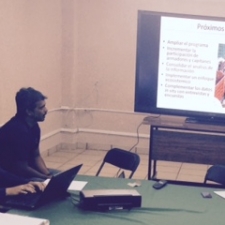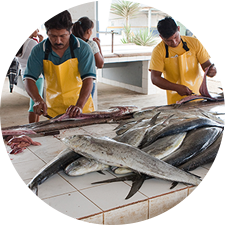
Multi-sector Collaboration in Hake Fishery
The Environmental Defense Fund in Mexico has been working with the fishing sector in the upper Gulf of California and policy makers to develop secure fishing rights in the industrial hake fishery. This fishery, located around Puerto Peñasco, is relatively new and has much potential, but is currently poorly managed with few regulations. EDF and the fishing sector have been collaborating to generate scientific data that allows fisheries managers to both understand fishery dynamics and design effective management. In addition to working with fisheries managers, EDF is working with policy makers to create a set of regulations that will effectively manage the resource as well as create incentives for the fishing sector to protect their resources. Finally, EDF is collaborating with fish buyers and processors to better understand market conditions for hake products and how to improve the quality and value of the end products. The ultimate goal of this initiative is to ensure the sustainability and profitability of the hake fishery, which could then serve as a model for other industrial finfish fisheries in the region.







